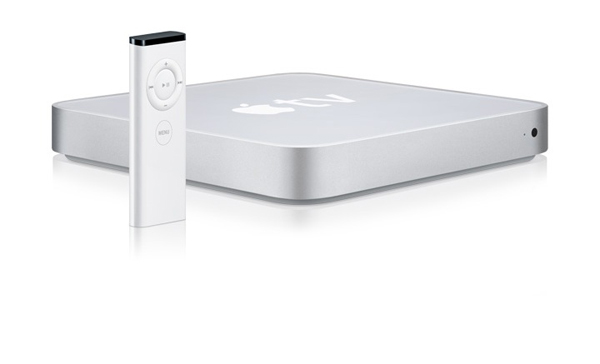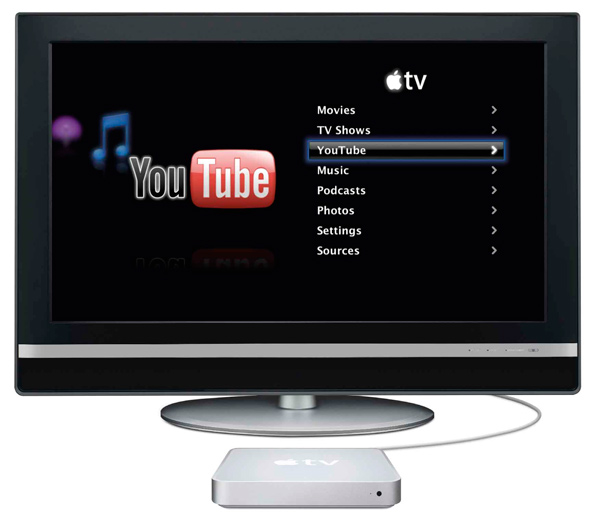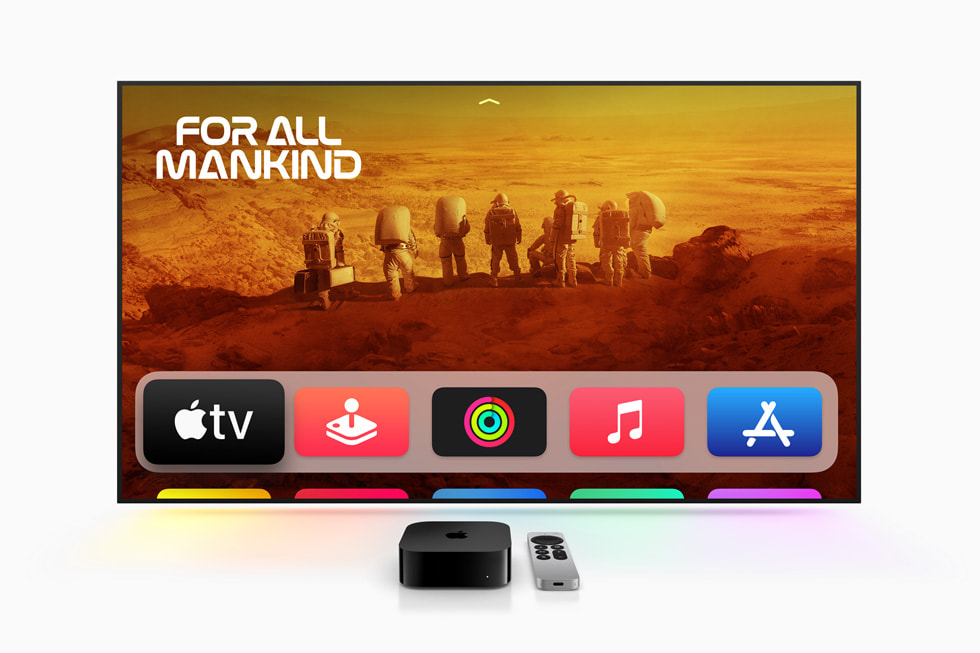Despite living thousands of miles apart and belonging to astronomically different tax brackets, it turns out that Steve Jobs and I share a hobby: the Apple TV.
Apple’s idea of having a hobby is to release a set-top box that offers an increasing degree of functionality through ongoing software upgrades. Apple TV remains tantalizingly under its potential (no 1080p support, a paltry 160GB hard drive capacity, a USB port that can’t be used for anything even though the device desperately needs external storage capability and no TV input capabilities).
I have three Apple TVs throughout the house and when everything works, the network is a thing of beauty. I can watch the three devices synchronizing from iTunes, busy shuffling the latest episode of The Simpsons over to the rec room and Lost up to my bedroom. But when the network starts acting up, look out. iTunes and Apple TV do not play nicely when the network connection is interrupted and I’ve experienced numerous episodes when new Wi-Fi networks in my neighborhood or new appliances played havoc with the connection.
I’d turn on the TV, try to stream a movie only to receive a “format not recognized” message, which is Apple TV’s cryptic way of saying it can’t connect to the iTunes server to stream the file. Internet connectivity is quickly restored, but once that connection to the iMac hosting iTunes is broken, iTunes and the Apple TV’s have a habit of ignoring each other. The only solution is to walk down to the basement and restart iTunes.
The hobby part comes with the sleuthing I resort to in an attempt to isolate and address the issues, running about with iStumbler, checking interference on different channels and monitoring network speeds. Most recently I replaced my Airport Express router with an Airport Extreme with a dedicated 802.11n network on 5GHz for the Apple TVs -that move has made for a stable month, but I’m still going to knock on wood.
All that aside, for many people, the AppleTV is a reasonably priced, attractive and simple way to get digital content onto a TV. The device gets little or no respect from the media, though.
Apple TV is seldom heralded by tech writers as a notable piece of equipment, much more frequently serving as the butt of jokes and featuring prominently in top ten product flop style lists. Popular Mechanics named AppleTV to its Top Ten Worst Gadgets of 2007, where it joined such luminary devices as a Wi-Fi enabled toy rabbit, the Ugobe Pleo, a $2000 vibration trainer and the first generation chocolate brown Microsoft Zune. Snap!
Apple CEO, Tim Cook, speaking at a Q&A session in February noted that Apple TV sales had increased by 35% compared to the same quarter last year, but reiterated that the set top device remains a hobby. As quoted in Business Insider’s transcripts of the conference call, Cook says : “Apple TV is still a hobby. We’ve been very clear about that.” Cook went on to say that the company does see something in the TV market, it’s just not sure what.
While solid sales numbers are hard to come by (Apple breaks out quarterly sales figures for iPhone, iPod and Macs but not other products), I’ve seen indications that Apple TV had moved 400,00 units by the end of 2007, an estimated 2.1 million units in 2008 and analysts were predicting 6.6 million for 2009. Even if we called it a conservative 8 million Apple TV’s out there today, that’s not an insignificant installed user base. To Apple, 8 million boxes may indeed represent a “hobby,” but consider some other products and their numbers:
- In the ten years between its introduction and 2008, Volkswagen sold 1 million units of its New Beetle, worldwide.
- Total number of TIVO subscribers as of January, 2010 were 2.6 million.
- Zune sales figures are difficult to come by, but the best guesses are in the range of 4 million units sold to date.
- Just over 10 million DSLR cameras were sold worldwide, by all manufacturers, in 2009.
- In January, iRobot announced Roomba sales since launch in 2002 had surpassed 5 million.
For other companies, a product that’s proven how software upgrades can fundamentally change the capabilities of a modern device and moved upwards of 8 million units over three years, while showing strong growth would be considered a solid success. Because it’s Apple, that doesn’t seem enough. It doesn’t help that management keeps dropping these “hobby” bombs and the fact that the AppleTV hasn’t been upgraded (other than a modest hard drive capacity bump) in the three years of its existence; Apple gives the appearance of not taking it seriously and the media tends to play along.
Apple TV has proven there is demand for a set top media box that “just works.” Apple’s ability to leverage the iTunes store for movie rentals and television show purchases, combined with the installation base of iTunes gives it a very strong toehold in the household media space. It’s sold millions of units despite the fact that many of the buyers (myself included) already own a PS3, Xbox 360 or other device capable of streaming movies.
Imagine what could happen if Apple updated the hardware specs to support 1080p, increased hard drive space or finally enabled that external USB port so existing Apple TVs could make use of big external hard drives. Or added a TV tuner for TIVO-like capabilities. Many people also see the potential for it morphing into a gaming platform. This would all be great, but none of these upgrades fit into Apple’s existing business model.
A TV tuner would cut into sales of Tunes TV shows. 1080p support would lead to demand for iTunes movies in 1080p which would mean slinging a whole lot more data through Apple’s server farms, chewing up bandwidth and making for a slower user rental experience. Bigger hard drives increases independence from iTunes.
Enabling that USB port would make jailbreaking the device a lot easier and if combined with a beefier processor, could have the makings of a very cheap Mac, cannibalizing Mac Mini sales. And video game capability would assume porting iPhone/iPad games (getting developers to invest in yet another standalone gaming platform would be a tough sell), potentially cutting into sales of the profitable portable devices, not to mention the fact that upscaled iPad games would not look so great on a 42 inch screen.
I don’t think Apple TV is going away any time soon. It may be insignificant to Apple’s bottom line, but people keep buying the device and given the modest investment in software upgrades, it seems a good way to hedge bets until the opportunities in the home media marketplace become more clear.
In the meantime, Apple keeps a toe in the door and with millions of its boxes in living rooms, helps keep any other competitors from gaining dominance until it figures this whole TV thing out. Still, three years is a long time between significant hardware updates and I wouldn’t be surprised to see an Apple TV update at some point this year, perhaps with the option of a terabyte hard drive and maybe even A4-style custom silicon that makes the experience snappier. I don’t expect to see 1080p, video games or having that external USB enabled any time soon, though.





GIPHY App Key not set. Please check settings
7 Comments